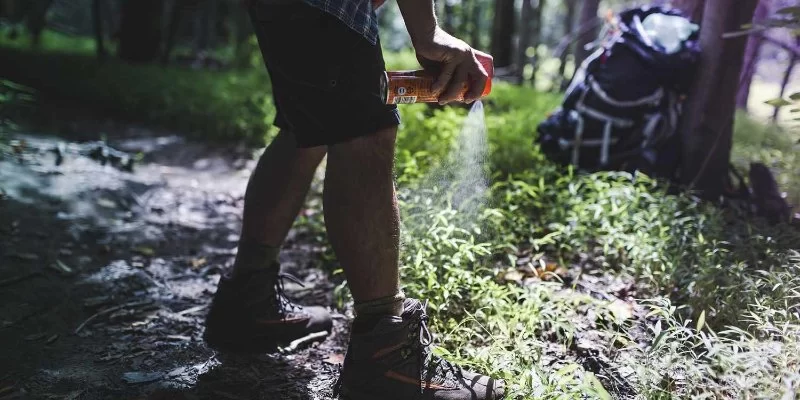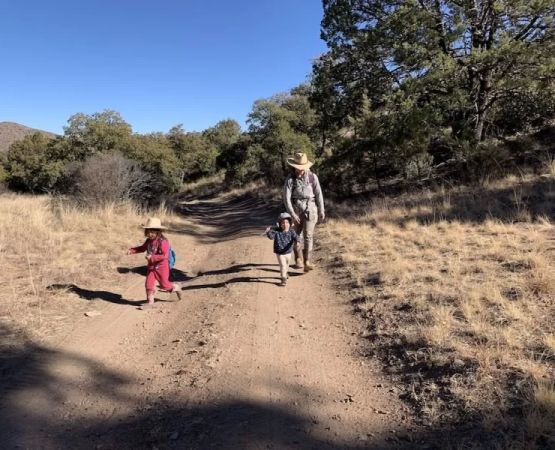- 1 - Preventing Insect Bites and Stings
- 2 - Common Insects and Their Bites
- 3 - First Aid for Insect Bites and Stings
- 4 - Dealing with Allergic Reactions
- 5 - A Real-Life Case Study: Insect Bites During a Camping Trip
1. Preventing Insect Bites and Stings
When camping, it’s essential to be proactive about preventing insect bites and stings. Insects such as mosquitoes, bees, and ticks are common in outdoor environments and can cause discomfort, infections, or even severe allergic reactions. Preventing these bites starts with proper preparation and protective measures.
Essential Protection Measures
Start by wearing long sleeves, pants, and socks to minimize skin exposure. Light-colored clothing is less attractive to mosquitoes, so consider dressing accordingly. Use insect repellent on exposed skin and clothing, especially those containing DEET or picaridin, which are effective against mosquitoes and ticks.
Choosing the Right Campsite
When choosing a campsite, avoid areas near stagnant water or tall grass, as these are prime breeding grounds for mosquitoes and ticks. Setting up camp in open areas with good airflow can also help reduce the presence of flying insects. Using a tent with mesh netting or a screened-in porch will provide additional protection during the night.
2. Common Insects and Their Bites
Understanding the types of insects that may bite or sting you while camping is essential for effective prevention and treatment. Let’s look at some of the most common insects and how to identify their bites and stings.
Mosquitoes
Mosquitoes are among the most notorious pests in outdoor environments. They typically bite exposed skin, leaving behind red, itchy welts. Their bites can cause minor irritation, but they can also transmit diseases such as West Nile virus or Zika virus. Mosquitoes are most active during dawn and dusk, so it’s important to take extra precautions during these times.
Bees and Wasps
Bees and wasps are attracted to sweet smells, such as sugary foods and floral scents. Their stings can cause a sharp pain and swelling, and in some cases, they can lead to severe allergic reactions. Bee stings generally leave the stinger behind, which should be removed immediately. Wasps, on the other hand, may sting multiple times.
Ticks
Ticks are particularly dangerous because they can transmit Lyme disease and other tick-borne illnesses. They typically latch onto the skin and can go unnoticed for hours or even days. It’s crucial to check for ticks after spending time in grassy or wooded areas. Ticks attach to the skin and appear as small, flat, or engorged bumps.
3. First Aid for Insect Bites and Stings
Knowing how to treat insect bites and stings while camping is crucial to prevent infection and alleviate discomfort. Here's a step-by-step guide for addressing common bites and stings.
General Treatment for Mosquito Bites
For mosquito bites, first clean the area with soap and water to reduce the risk of infection. Apply a cold compress or an ice pack to alleviate swelling and itching. Over-the-counter hydrocortisone creams or antihistamine lotions can help reduce itching. Avoid scratching to prevent further irritation or infection.
How to Treat Bee and Wasp Stings
If stung by a bee, remove the stinger quickly using a scraping motion (like with a credit card) to avoid squeezing the venom into the skin. Clean the area with soap and water, then apply a cold compress to reduce swelling. For wasp stings, the process is similar, though the sting can be more painful. If you experience swelling, redness, or signs of an allergic reaction, seek medical attention immediately.
Removing Ticks Safely
If you find a tick attached to your skin, it’s essential to remove it carefully. Use fine-tipped tweezers to grasp the tick as close to the skin’s surface as possible and pull upward with steady, even pressure. Clean the area with antiseptic and wash your hands thoroughly. If you develop a rash or flu-like symptoms within weeks of the tick bite, seek medical attention as this could be a sign of Lyme disease.
4. Dealing with Allergic Reactions
While most insect bites and stings are relatively harmless, some people may experience allergic reactions. In rare cases, insect stings, especially from bees, can lead to anaphylaxis, a severe and potentially life-threatening allergic reaction.
Signs of an Allergic Reaction
Symptoms of an allergic reaction include swelling beyond the area of the bite, difficulty breathing, dizziness, or hives. If any of these signs occur, it’s important to seek immediate medical help. Carrying an epinephrine auto-injector (EpiPen) is essential for individuals with known severe allergies to insect stings.
Prevention and Preparation for Allergic Reactions
If you or someone in your group has a history of severe insect allergies, ensure that you’re properly prepared. Bring allergy medication, including antihistamines, and ensure that everyone knows where it is stored. Consider informing fellow campers of any severe allergies in the group, so they can help if needed.
5. A Real-Life Case Study: Insect Bites During a Camping Trip
On a recent camping trip, a group of hikers found themselves in an isolated area with high mosquito activity. Despite using repellent and wearing long sleeves, one of the group members suffered a severe allergic reaction to a mosquito bite. The group leader, who was prepared with an epinephrine auto-injector, immediately administered it, preventing a more severe reaction. This quick action saved the camper from further complications and highlighted the importance of being prepared for unexpected insect-related health risks.
Lessons Learned
This incident underscores the importance of understanding the risks of insect bites and stings, and the need for adequate preparation. It also serves as a reminder that safety doesn’t end with prevention—being prepared for emergencies is just as crucial in ensuring a fun and safe camping experience.







